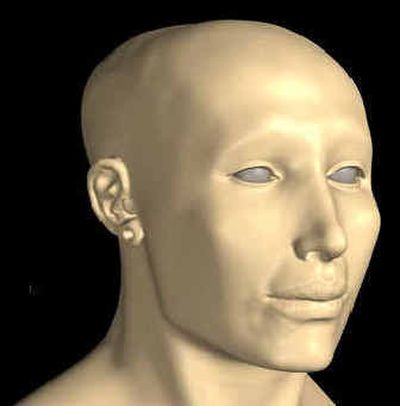TV takes unique look at boy king

He stood 5 foot 6, was a robust teenager of 19, had no cavities in his teeth and no diseases – but his body was a mess of fractures and he died a violent death.
Was it murder due to palace intrigue? Or did he take a horrific spill off his chariot?
Some 3,330 years of mystery come to an end Sunday at 9 p.m. when the National Geographic Channel airs “King Tut’s Final Secrets” (digital cable channel 273 in Spokane, 120 in Coeur d’Alene).
King Tut is short for King Tutankhamun, the boy pharaoh whose golden tomb was raided by explorers in the 1920s and whose treasures were later exhibited on grand museum tours.
In a show that equals the suspense and drama of the “CSI” television franchise, “King Tut” turns loose a mobile CT-scan machine, a bevy of forensic pathologists and other scientists, a leading archaeologist and two paleontology sculptors to use modern technology to determine why King Tut ruled only 10 years.
Director and producer Brando Quilici has delivered a masterful show with this two-hour special, as he has with several other award-winning films dealing with science and nature.
While it ends with a bit of a cheap shot, all else is nicely built as a three-way mystery that investigates the deadly molds and gases that are unleashed when long-sealed tombs are opened, the CT-scan of King Tut’s body and the artistic reconstruction of his face.
In a painstaking affair with a three-hour time limit, his body is for the first time removed from the tomb and taken just outside to a truck bearing a CT-scanner – where 1,700 high-resolution 3-D images will probe every inch of his bones, skull and teeth, resulting in the first digital pharaoh created by a CT machine calibrated for mummies.
It’s no easy task – and one that anti-tech people will enjoy because an air conditioning malfunction in the multimillion-dollar CT truck causes a computer crash that imperils the project.
The quick fix? A $10 fan.
We’ll keep the findings on the three avenues a secret so you can enjoy the mystery as it unfolds. Suffice it to say that gases, molds and fungi in those tombs are a toxic nightmare, King Tut had a severely impacted wisdom tooth that was probably causing him pain, and the CT-scan 3-D images are mesmerizing.
The film features actors portraying King Tut, his wife and their times; historic footage of the 1920s digs; computerized images showing the many layers of King Tut’s coffin; a look at other mummies and tombs and their treasures; and insight into the mummification process. There is not a wasted frame, although the narration sometimes is repetitious.
One wonders what King Tut, not fully grown at the time of his death, would think of all this. As the narrator notes, the interest in him is bigger than his place in history.
More on King Tut
• The June issue of National Geographic will carry the cover story “The New Face of King Tut,” revealing the forensic reconstruction of his face using data from a CT scan.
• Also due out in June from National Geographic are “Tutankhamun and the Golden Age of the Pharaohs,” a companion book to the exhibit, and the children’s book “Tutankhamun: The Mystery of the Boy King.”
• Nationalgeographic.com will host a variety of Egypt-related material, complete with photos and classroom materials, in the coming months.
• On June 24 the National Geographic Museum in Washington, D.C., opens the exhibit “Tut Unwrapped,” detailing the visual examination of the 1920s, the X-rays of 1968 and 1978, and the 2005 CT scan. It runs through Aug. 21.
• For the first time in 26 years, more than 130 treasures from the tombs of Tutankhamun and other Valley of the Kings residents will tour the United States for 27 months. The “Tutankhamun and the Golden Age of the Pharaohs” exhibit kicks off June 16 in Los Angeles before moving on to Fort Lauderdale, Fla., Chicago and Philadelphia.